What Can Be Done For Scoliosis In Adults?
The short answer to what can be done for scoliosis in adults is a lot, but it’s important to understand the concepts behind the treatment.
Finally, there are solutions for adult scoliosis that do more than just mask your symptoms with medications. These treatments work to reduce the underlying cause of the pain, the collapse of the spine. These treatments work together to help naturally restore your body’s motion, stability and balance and have helped thousands of other adults with scoliosis relieve their pain and avoid scoliosis surgery.
When combined they offer you the greatest chance of improving your curvatures, even as an adult. If you are an adult with scoliosis related pain or disability it’s possible that they can help you too but before we talk about these innovative solutions, let’s first discuss why conventional medical treatments for adult scoliosis often falls short of producing results.
Failure of Conventional Medical Treatment for Adult Scoliosis
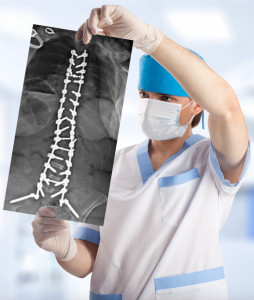 The biggest challenge with the conventional medical treatment approach for scoliosis in adults is other than surgery, treatment is pretty much just a palliative approach with pain medications that only temporarily mask the symptoms but does not address the underlying cause of the problem.
The biggest challenge with the conventional medical treatment approach for scoliosis in adults is other than surgery, treatment is pretty much just a palliative approach with pain medications that only temporarily mask the symptoms but does not address the underlying cause of the problem.
If that does not work then a referral for physical therapy for scoliosis or chiropractic is often made but in most cases the exercise treatment provided is bilaterally, which means that they do the same treatment or exercise on both sides of the body. The problem with that is scoliosis has such a profound muscular imbalance that treating it in a balanced way does not improve it and may actually aggravate your scoliosis. For instance, you can do one exercise that will open up the curvature, which is good for scoliosis but if you do the exact same exercise in the opposite direction it can actually make your curve worse!
The next step in the medical model is a referral to an orthopedic specialist for a scoliosis surgery consultation. However, since scoliosis surgery is such a major procedure often surgeon’s are reluctant to do surgery on adults because of the poor outcomes due to the reduced flexibility of their body and longer recovery time. So surgery is usually held as the treatment of last resort for adults and is only considered when their pain is intractable.
So what other options are available for scoliosis in adults to help reduce the pain caused by curvatures to the spine? To better understand these options it is essential to first have some knowledge of the important features that contribute to the progression of scoliosis in adults.
When Does Scoliosis Start In Adults?
 Although you may have never had any symptoms from your curves until later in life, most adults have had their scoliosis since their adolescence. Adolescent Idiopathic Scoliosis accounts for 85% of all scoliosis cases, but it is often asymptomatic in youth, which is why many cases may go completely un-diagnosed until later in life when the spine degenerates and causes pain in adulthood.
Although you may have never had any symptoms from your curves until later in life, most adults have had their scoliosis since their adolescence. Adolescent Idiopathic Scoliosis accounts for 85% of all scoliosis cases, but it is often asymptomatic in youth, which is why many cases may go completely un-diagnosed until later in life when the spine degenerates and causes pain in adulthood.
When scoliosis begins the body is often able to adapt to the abnormal changes in the spine because the body has many overlapping systems of support that help local tension to be dispersed throughout the body, so that if one system fails the others will take up the slack to support the body. However, over time these other support systems may also begin to fail under the collapse of the strain and this eventually leads to pain.
Scoliosis can also start in adulthood and is known as Degenerative Scoliosis or Adult Onset Scoliosis. This type of scoliosis usually occurs after menopause due to bony changes in the vertebra that leads to collapse and the same type of progressive downward spiral that occurs in adolescent idiopathic scoliosis.
Scoliosis Progression in Adults
What causes progression of scoliosis? Progression of scoliosis curves in adults can result from a number of factors depending on the type of progression that occurs. There are two types of scoliosis progression that occur in adulthood. Rapid progression which is hormonally influenced and Gradual Progression which is caused by uneven forces applied to an imbalanced body by gravity.
Rapid Scoliosis Progression
Scoliosis, especially in females can change rapidly during times of life where there is a significant shifts in hormonal balance that has an impact the bone growth, ligament strength and bone density.
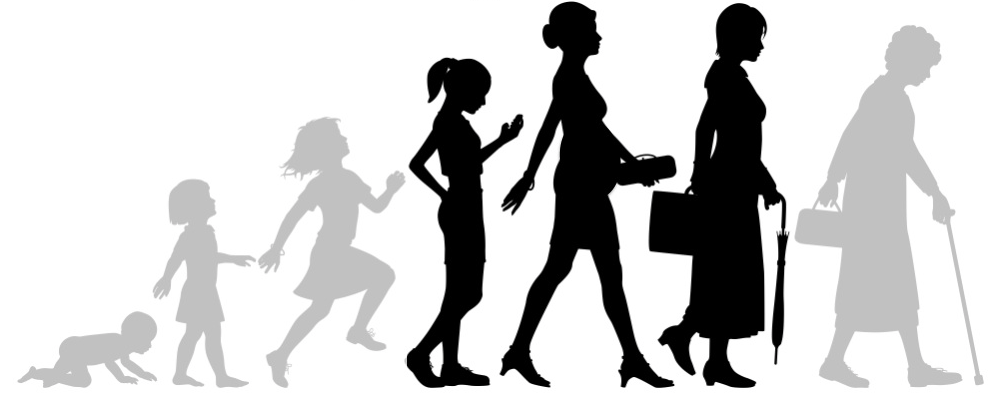
For a woman with scoliosis there are 3 times in her life that she is at the greatest risk for rapid progression of her scoliosis and they all involve sudden shift in hormonal changes.
1. Puberty
2. Pregnacy
3. Menopause
Puberty has the added stressor of a period of rapid growth that can cause a sudden progression of scoliosis. Pregnancy has bio-mechanical stressors of a rapidly changing center of gravity in the 3rd trimester combined with the mix of the hormone Relaxin that causes ligamentous laxity in the pelvis to allow for passage of the baby. Relaxin doesn’t just affect the ligaments of the pelvis, it affects all the ligaments of the spine, thus can cause progression of scoliosis if a woman is doing nothing to support her spine. Menopause causes demineralization of the spine which can result in sudden bony changes in the spine due to osteopenia and osteoporosis.
Gradual Scoliosis Progression
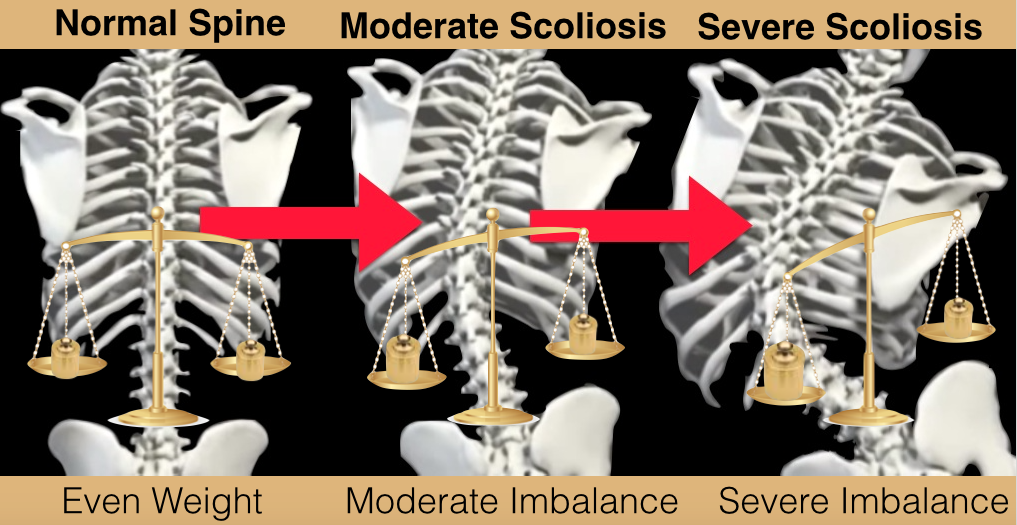
Also, for scoliosis curves that have advanced to 30° or more in adolescence have a greater risk of slow progression into adulthood at a rate of about 1° per year, which can add up over time. This type of progression occurs due to gravity taking advantage of the postural imbalances caused by the shift in weight by scoliosis. The greater the movement is away from the midline, the greater the imbalance, the harder the body has to work just to hold itself up.
Supporting An Adult Spine With Scoliosis
Addressing the biomechanical abnormalities in order to stabilize the spine is key to successfully stopping the progressive deterioration of scoliosis in an adult and relieving it’s associated pain. Every scoliosis has both a structural component and a postural component. Since an adult is done growing the structural component is relatively stationary and cannot be changed, but the postural component, which is the collapse of the spine over time is quite changeable in an adult. The postural component can be up to 20% of the total curve and it usually the part of the curve that causes pain in adulthood.
Postural collapse occurs in scoliosis due to the significant right to the left imbalance in the trunk. This can be seen when you look at your back and you see the muscles on the outside of the curve are bulged out and tight because they are straining to hold the body up, while the muscles on the other side are flattened and weakened.
Fortunately, in most cases of adult scoliosis, the postural component of scoliosis can be improved with conservative treatment and that helps the body move back towards the mid-line which in most cases helps relieve the pain.
How Movement Affects Spinal Structure Over Time
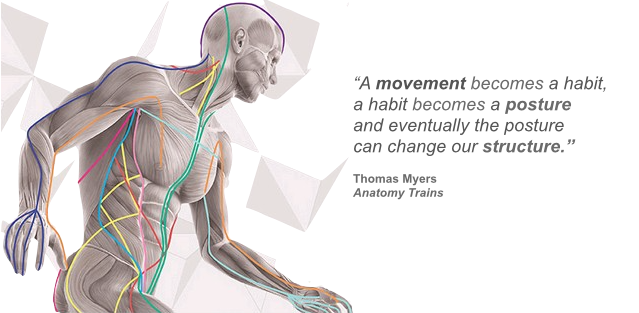
Studies done at the Katharina Schroth Spinal Deformities Rehabilitation Center in Germany have shown that scoliosis patients have abnormal movement patterns that greatly contribute to scoliosis causes. If these aberrant movement patterns stay in place long enough they begin to adversely affect the person’s entire posture. When postural changes stay uncorrected they will eventually cause structural changes in the body that lead to further aberrant movement patterns. This downward spiral is commonly found in scoliosis and must be corrected to avoid a future of pain and disability.
Degeneration occurs in the body’s attempt to stabilize the abnormal structure of the spine caused by scoliosis. The degenerative changes in the bone and subsequent nerve irritation are what causes the pain. They will continue to progressively worsen and cause more pain unless something is done to stabilize the spine.
 Poor posture is to a scoliosis patient what sugar is to diabetic, a huge problem. Unfortunately, it is not as easy as telling someone with scoliosis to simply sit up straight. The abnormal muscle patterns have been developing over years and are not that easily overcome. In scoliosis muscles and the surrounding connective tissues have shortened to adapt to the changes in the structure of the spine. These shortened tissues (blue) are less elastic and less freely movable compared to the other side, which is lengthened (red).
Poor posture is to a scoliosis patient what sugar is to diabetic, a huge problem. Unfortunately, it is not as easy as telling someone with scoliosis to simply sit up straight. The abnormal muscle patterns have been developing over years and are not that easily overcome. In scoliosis muscles and the surrounding connective tissues have shortened to adapt to the changes in the structure of the spine. These shortened tissues (blue) are less elastic and less freely movable compared to the other side, which is lengthened (red).
The chronic changes in tension of the muscle chains have also resulted in what is known as plastic remodeling and results in deforming of the surrounding connective tissues. This further binds up the affected tissues causing localized hypoxia of the structures.
Since the tissues are not getting enough oxygen theses structures eventually adapt producing tough, dense scar tissue in the affected area. As this scar tissue builds up it ties down the structures keeping them from moving freely, muscles become even shorter, tension on tendons and bones causes deformation of the skeleton causing nerves to become trapped and eventually causing pain.
In order to reverse this process and make postural corrections and finally rebalancing the muscular components involved in scoliosis it is important that you first make changes in the structural components of the body that have been adversely affected by scoliosis. This process of restoring structural integrity and proper function to the body is a concept called “retracing”. It involves taking the body back through the same pathway it took to get where it is today, just in reverse. Starting at the end (i.e.: a progressive scoliosis curve) and working backwards toward a more balances spinal structure is a process we call Structural Re-balancing. Our non-surgical scoliosis treatment alternatives are all designed to help the body restore its structural balance.
Corrective Movement Therapy For Scoliosis In Adults
In order to help correct the progressive collapse of a scoliosis it’s important to address the above issues your body’s balancing systems. The following treatments are designed to encourage your body move into a corrected position to improve the postural imbalances by re-calibrate your brain awareness to this new and improved position.
Exercises for Treatment of Scoliosis in Adults
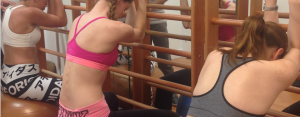 The Schroth Method is a self-help method of scoliosis treatment that was developed in Germany by Katharina Schroth who founded and developed the Schroth Method. This physiotherapeutic approach is designed to reshape the rib cage and de-rotate the spine with breathing techniques and isometric exercises. Since 1927, the Schroth Clinic for Scoliosis has accepted Scoliosis and Kyphosis patients on an in-patient basis, effectively managing the deformity associated with scoliosis without bracing or surgery.
The Schroth Method is a self-help method of scoliosis treatment that was developed in Germany by Katharina Schroth who founded and developed the Schroth Method. This physiotherapeutic approach is designed to reshape the rib cage and de-rotate the spine with breathing techniques and isometric exercises. Since 1927, the Schroth Clinic for Scoliosis has accepted Scoliosis and Kyphosis patients on an in-patient basis, effectively managing the deformity associated with scoliosis without bracing or surgery.
Once a patient has learned and mastered these exercises after repeatedly doing them on a daily basis they begin to develop new and improved patterns in their nervous and muscular systems that will help improve their curvatures. There are three main upright positions patients are taught to correct are: Standing, Sitting and Walking. The focus is to teach a patient how to reduce your curvatures in each of these positions and then have you repeatedly practice these healthier, more anatomically correct positions until they become habituated into the predominant patterns of movement.
http://youtu.be/rVL5brA8Vi8
With scoliosis as the spine curves laterally the ribs on the Concave side will flattened as they move closer to each other while the ribs on the convex side will form a rib hump as they spread farther apart. The Schroth method teaches how to open up the space between the ribs on the concave side so that a person can begin the process of correcting this rib cage deformity which in turn helps correct the curvatures in the spine.
Because of years of mal alignment a mature spines require more intensive methods to re-educate movement patterns and mobilization techniques to help reshape the rib cage. The Schroth Method helps correct these chronic postural patterns by teaching the body a corrected pattern of movement that will eventually replace the old abnormal pattern.
SpineCor Adult Pain Relief Scoliosis Brace
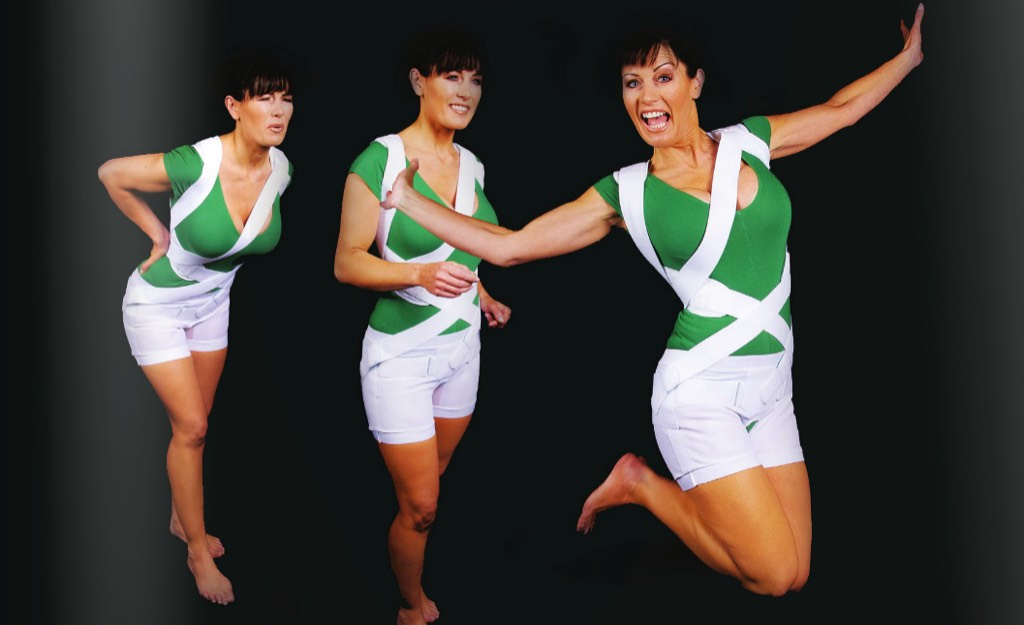
The SpineCor dynamic bracing system has been used successfully for years in children has now been successfully adapted for treatment for adults with scoliosis. This unique patented soft flexible brace is based on a revolutionary scientific approach that was developed by Dr. Charles Hilaire Rivard and Dr. Christine Coillard, a team of orthopedic surgeons at St. Justine’s Hospital in Montreal that specialize in the treatment of adolescent idiopathic scoliosis.
Although this dynamic brace moves with the body it still applies corrective forces three dimensionally where they are needed while still allowing freedom of movement. The dynamic brace consists of corrective and adjustable elastic bands which are interconnected to three static components that create a modular system. This allows physicians to customize treatment and it can be worn beneath the patients clothing.
Unlike a rigid brace, SpineCor allows for an adult to be treated without interfering with or preventing their normal daily activities. This innovative approach allows a dynamic range of activities while still correcting the curvatures.
Scoliosis in adults should be cared for by a doctor with knowledge in specialized treatment protocols in scoliosis, dynamic bracing and Schroth Method exercises. Treatment for the adult spines should be based on a comprehensive evaluation which should include an Orthopedic/Neurological examination. Recent upright X-rays and other functional assessments are also needed to evaluate other causes of pain.
Once properly evaluated and the patient has been determined to be candidate for dynamic bracing, the Spinecor Adult Brace can be fitted. This dynamic brace is designed to help relieve pain created by spinal translation by de-weighting the adult spine in areas of structural instability caused by the scoliosis. This type of corrective movement therapy can help adults of all ages.
The treatment objectives in Adult Scoliosis are to provide pain relief and to improve Activities of Daily Living (ADLs). Curvature reductions can often be achieved through improved postural stability but changes in bone shape are not realistic in the adult spine. Studies of Adult Spinecor bracing by our doctors have shown reductions in Cobb angle measurements in all types of curvatures regardless of curvature location or length time the curvature has been present.
The treatment outcomes for other of our adult patients like Kathy based on satisfaction surveys confirms that the vast majority of our adult patients are very happy with the results and they strongly recommend our program to other adults with scoliosis.
The treatment protocols and schedule for wearing the SpineCor brace varies depending upon the patients scoliosis and treatment objectives.A gradual building up of time of wearing the brace is recommended as initially fatigue may limit brace use in the first few weeks of treatment, but the majority of adults find they can build up to full time wearing within the first couple of months. Most adult patients wear the SpineCor brace somewhere between 8 – 16 hours a day. They will put it on in the morning after a shower and wear it throughout the day and take it off sometime before they go to bed.
Patients who have chronic pain are typically fitted in an Adult SpineCor configuration which is designed to shift the posture of the spine and reduce pain. Changes in the brace configuration are based upon clinical measurements that are specific to each patient. Brace fittings are then designed to restrict and re-educate movement patterns are typically used in patients without pain.
The Spinecor Adult Scoliosis is indicated for use with people who either have adult onset Scoliosis or Adolescent Idiopathic Scoliosis in adulthood. Patients suffering from pain, fatigue or weakness as a result of scoliosis are typically considered candidates for bracing. Other indications include patients who are interested in improving the cosmetic appearance of their waist angles and ribcage. Patients with respiratory conditions that are secondary to Scoliosis may also be considered for treatment if there is no significant reduction in vital capacity or blood oxygen levels with the brace properly fitted.
The first and currently the only flexible dynamic brace for scoliosis in adults, SpineCor is most effective when curvatures are treated early; however, when used in conjunction with a comprehensive rehabilitation program, Spinecor can be effective with adults with larger curves as well.
Hip Flexor Imbalance
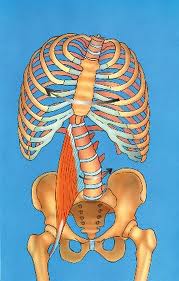 Scoliosis in adults is often a severe manifestation of a rotation dysfunction that can influence a lumbar scoliosis by frequently involving the powerful hip flexor muscles. If one side of your hip flexors is imbalanced compared to the other than it will pull the spine where it attaches toward that direction causing a torque in the spine that will extend all the way up causing a rotation of the spine that is characteristically found in scoliosis.
Scoliosis in adults is often a severe manifestation of a rotation dysfunction that can influence a lumbar scoliosis by frequently involving the powerful hip flexor muscles. If one side of your hip flexors is imbalanced compared to the other than it will pull the spine where it attaches toward that direction causing a torque in the spine that will extend all the way up causing a rotation of the spine that is characteristically found in scoliosis.
The Schroth Method uses mobilization techniques that are designed to expand the flattened areas of the ribcage, while de-rotating the spine with specific breathing exercises. The Schroth Method combined with the SpineCor brace gives a patient the best opportunity to avoid surgery for scoliosis since both are attempting to de-rotate the spine through the use of muscle memory and postural awareness, but sometimes the adaptive shortening of these muscles and other connective tissues limits how much mobility is able to be restored. In cases like that additional treatments targeted at lengthening the specific shortened structures is needed.
Active Release Techniques for Scoliosis
Specific applications of a myofascial therapy called Active Release Techniques, (A.R.T.) have been found to be very beneficial in helping lengthen the adaptively shortened tissues that can relieve the pain of scoliosis and improving bio-mechanical function of the spine. A.R.T. is the treatment of choice for relieving muscular imbalances involved in scoliosis because of its specificity for each of the involved tissues (there are over 500 specific ART moves involving the structures of the body) and we find that it produces the best results.
ART treatment is applied to help assist in correcting of the involved shortened tissues. It becomes crucial to break this abnormal neuromuscular pattern by releasing the fascial adhesions surrounding these muscles and allowing them to re-establish normal movement patterns. This achieved with ART by shortening the affected tissue then applying tension with your manual contact in the direction that lengthen the tissue or releases it allowing it to restore its normal slide relative to the adjacent tissue.
 ART is effective at restoring proper biomechanical function in chronic musculoskeletal conditions, like scoliosis because it releases tissue adhesions between the muscles, fascia and nerves of the body caused by prolonged abnormal postural dysfunctions. The power of Active Release Techniques in scoliosis treatment lies in its ability to effectively resolve chronic tissue adhesions that have not responded to other forms of therapy.
ART is effective at restoring proper biomechanical function in chronic musculoskeletal conditions, like scoliosis because it releases tissue adhesions between the muscles, fascia and nerves of the body caused by prolonged abnormal postural dysfunctions. The power of Active Release Techniques in scoliosis treatment lies in its ability to effectively resolve chronic tissue adhesions that have not responded to other forms of therapy.
Over the course of treatment a, gradual release and remodeling of the taut tissues in the shortened spiral line allows for restoration of normal muscle function in that line. Once this is achieved then the constant strain to the opposite line is relieved and body can begin the process of rebalancing. Through specific, unidirectional exercises specifically designed for scoliosis the provider can now begin to set new postural patterns that hasten the process of retracing. By first freeing up these specific adhesions these newly learned postural patterns can more easily become habit and positively impact the overall movement patterns of the body. This greatly helps stop the progression of the curves that have contributed to the scoliosis in the first place.
Summary:
The old school medical model for treatment of scoliosis is really only designed to provide temporary pain relief without addressing any of the underlying causes of scoliosis. Fortunately, now there are far better solutions to help relieve your pain by re-educating the musculature surrounding the spine to move your body back towards midline where it is better balanced and does not cause strain to the supporting structures. This can provide lasting relief in your pain and allow you to enjoy to your usual activities without the fear that they will flair up your scoliosis.
Find Out If Our Treatments Are Right For Your Scoliosis
The good news is that you no longer have to settle for learning how to live with scoliosis pain. Find out if you are a candidate for our treatment protocols by contacting us.
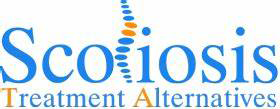

Am I candidate for surgery to straightened the spine? I get tired usually. I am 59 years old and I’m thinking to have it done. To live a normal movement.
Nannette,
I’m unable to tell you if you are a candidate for surgery or not as that is not my specialty. We specialize in non-surgical treatment of scoliosis. If you are interested in finding out if you may be a candidate for non-surgical treatment then please give us a call at (800) 943-1254 for a Free Phone Consult. Dr. Brett Diaz, D.C.
I have media medi! I also I am a actor and model. In the medical profession for over 10 yrs. No anything anymore. My life is just full of pain and pills. I hate it! I don’t want a bar in my back. Please help me. You can use me as a study. Like I said ..My back is a challenge.
Janey,
Thank you for your interest in our scoliosis treatments. Please give me a phone call at (800) 943-1254 for a Free Phone Consult to discuss your scoliosis to see if our treatments are right for you. Dr. Brett Diaz, D.C.
I am 64 years old, I developed a 56 degree scoliosis last year, I don’t want surgery. I have had neck and back pain for 17 years and take pain medication. I believe your method looks promising, but you are not located near me.
Jim
Jim, Since our treatments are essential “home based therapies” many of our patients travel considerable distances to our offices to get treatment as they know that after their initial brace fitting and Schroth class they really only need to return to see us once every 3 months or so. If that might work for you then schedule a Free Phone Consult to discuss your scoliosis further. http://scoliosistreatmentalternatives.com/free-scoliosis-phone-consult-adult
I am a 65 year old female , with a 65 curve to right side. I’ in pain 24 hrs a day. They won’t to put rodes on both sides. I have had 4 people me I will still be pain.why! Do the surgery then? It also has affected my right hip and leg .I loss my balance very easily fall. I’m almost to the point of a wheel chair. Willba brave help me any ?
Vera, Thank you for your interest in our scoliosis treatments. About half or our patients are adults and many of them have advanced curves like yours, so there is a chance that SpineCor could help you too. To find out we would need to discuss your case in more detail. Please feel free to give us a call on Monday at (800) 943-1254 for a Free Phone Consult to discuss your scoliosis to find out if our treatments are right for you.
I have 60 cob angel scoliosis ( C curve ) & 25 years old, What is your advise ( Surgery or Brace )
Kuma,
Thanks for your question. While it’s impossible to say for sure what type of treatment would be best for you without first examining your scoliosis, it is almost always best to at least consider trying conservative treatment before undergoing surgery, as surgery should always be the last option. I would suggest giving us a call at (800) 943-1254 to discuss your scoliosis to find out if our alternative treatments may be able to help you avoid a major scoliosis surgery.
Dr. Brett Diaz, D.C.
First, sorry if my question is irrelevant, but even so, you might be able to advise or guide me to the right direction. I am concerned about thoracic kyphosis and lumbar lordosis due to poor posture in a 28 year old male. Do you have any idea about possible treatments or exercises (preferably not surgery) to help correct/improve this situation. Your reply is kindly appreciated. Thank you.
Karim,
Yes. We do offer treatment solutions for Kyphosis, with both SpineCor and kyphosis specific exercise. Here is an article I wrote about our treatments – http://scoliosistreatmentalternatives.com/3802/treatment-for-kyphosis/
Please give us a call at (800) 943-1254 for a Free Phone Consult to discuss you scoliosis and find out if our treatments are right for you.
Dr. Brett Diaz, D.C.
I veronika,20 years old. I suffer
scoliosis normal, what there
will be increase in stages if there is
no medical?
Veronica, There are treatments that can help your scoliosis. Please give us a call at (800) 943-1254 for a Free Phone Consult and we can discuss them with you.
I don’t now speak englis..
how can I do consult and discuss
What language do you speak? The best way this case is for you to send me an email. Write it in your native language then translate it into English using Google Translate. I will do the same in my reply to you. You can send the email to [email protected] Dr. Brett Diaz, D.C.
I
I am 64 year old male, started with painful cervical stenosis in 2000, I just was taking meds and doing pt with traction. In 2002, I started having sciatica with lower back pain. I have lymphedema in both legs. Last year, I rapidly developed scoliosis, 1st scoliosis xray , 54 degree lean from bottom of t12 to top of l5. 6 months later, 2nd scoliosis xray, severe levoconvex lumbar scoliosis, 55 degree angle, between same area. I am in a lot of pain between cervical stenosis, scoliosis, and disc problems in S1 and L5, and sciatica. I have medicare, they don’t cover much, your treatment seems good, especially braces.
Jim
Jim,
Thank you for your interest in our conservative treatment but I’m concerned that you’re scoliosis may be secondary to another issue. So before I will consider you for conservative care I strongly recommend that you see an orthopedic surgeon regarding your highly unusual scoliosis presentation and extremely rapid progression. They will need to rule out a pathological process that may be driving yours curves to progress so rapidly.
After any pathological process has been ruled out and you still want to consider conservative care then please feel free to contact me again to discuss your case and what the orthopedist found with their diagnostic testing.
I am 79 years old and within the past five or ten years I have developed scoliosis which is now causing pain in my right side. I have been unsuccessful in finding a physician to help and have periodic steroid shots only. I live in Norman Oklahoma and want to know if there Is a physician in or around my area who can assist me in acquiring the spinecor brace or any other help. Thanks…
Dee,
Thank you for your interest. I am unaware of any doctors in your area that provide our type of scoliosis treatment. The closest office we have to you would be in Dallas. If you think you could travel there for treatment then please give us a call at (800) 943-1254 for a Free Phone Consult to discuss your scoliosis to see if our program is right for you.
I live close to Vancouver, BC, Canada – is there a clinic in Vancouver that uses your techniques and sells the Spine Cor brace? if not, is there any city in Canada that sells the brace?
Sharon, Our closest office to you is in Seattle WA. If you can travel there to see us then we can provide you with both Schroth and SpineCor. Please give us a call at (800) 943-1254 for a Free Phone Consult. Dr. Brett Diaz, D.C.
HI my name is Corali Williamson, 53 spoke with you over the phone /Internet, I have back pain I’m pretty sure it’s due to my scoliosis, I live in Delaware, Millsboro. Need a doctor in my area to assess my back etc
Corali, Our close office to you is in New York. If you think you might be able to travel there for treatment then please give us a call at (800) 943-1254 for a Free Phone Consult. Dr. Brett Diaz, D.C.
Dr Diaz, This is a wonderful article. I am a 51 year old with a Harrington fusion. (done when I was 14) Have been on disability due to pain and degenerative changes for the past three years.
I noticed that the Dr. has not answered your question. It’s actually the only question in these comments that didn’t get answered. I, too, am in your condition. I’m a 48 year old female with a Harrington fusion (done when I was 8). I would love to know if there is anything that can be done. Other physicians and orthopedic surgeons have told me “there’s nothing I can do, you have to live with the pain”.
Becky,
Thanks for your interest in our alternative scoliosis treatments.
While the vast majority of scoliosis we help each year are people who are looking to avoid surgery, there is a growing minority of people who, like you, are post op that we are able to help relieve their scoliosis pain. So there is a chance we could be able to help you too, it will just depend on the particulars of your case of scoliosis.
Obviously, we accept these cases only if we think we can help and that assessment is done on a case-by-case basis since once surgery is done the normal biomechanics of the spine changes.
What I would recommend is that you call us at (800) 943-1254 for a Free Phone Consult with one of our doctors they can give you a better idea if our treatments are right in your case of scoliosis. The closest office we have to you would be in Virginia but you’ll only need to travel there every 3 months or so. The rest of the treatment we will teach you how to do at home.
Dr Diaz, I’m 54 yrs old and recently I have an X-ray done and found out that I have dextroscoliosis with Cobb angle of 17 and having back pain right now and it’s uncomfortable when I am sitting down. Is there any help. Thanks
Leslie, Yes, there is certainly help for you. Please give us a call tomorrow at (800) 943-1254 for a Free Phone Consult to discuss your scoliosis further.
Bone remodeling in adults is a fact. Do you think Spimecor may help to remodel the vertebras? But what about ribs? It’s not much clear..
Yes, it is true that bone remodeling takes place in adults based on demand. The SpineCor brace for adults does help the body move towards midline so it evens the forces to the vertebra so that remodeling can take place slowly over time. It may also help some remodeling with the ribs too but to a lesser degree than the vertebra. The ribs are far more likely to be helped with directional breathing as done in Nu-Schroth.
My name is Miguel, I live in San Francisco de Campeche, Mexico
I have a teenage daughter 16 years has scoliosis S, I want information for non-surgical treatment of this disease, you send me information and how to contact them)
Miguel,
We have several offices in the US that our patients from Mexico travel to in California, Arizona and Texas. If you can bring your daughter to the US for treatment then please give us a call at (800) 943-1254 for a Free Phone Consult to discuss her scoliosis.
I am an84 years old with severe scoliosis. A chiropractor was snapping my spine and caused me to
become in worse condition. Another chiropractor offered me a similar support brace to yours for $4,800.00 which I refused. Currently I am offered physical therapy. My spine is surrounded with arthritis,and perhaps the other alternative according to an MD will be an epidural.
Clayton
.
Clayton,
You may want to reconsider the SpineCor brace. In our practice about half of our patients are adults with scoliosis looking for pain relief. Of those a good number of those that we help with SpineCor are seniors like you. So chances are it can help you too. Epidurals will only mask your symptoms temporarily and Physical Therapy isn’t very effective unless it’s specific to your curve pattern and not done bilaterally, which most is.
I am a below the knee amputee, right ankle joint, Symes, I was not fitted with a prosthesis correctly, namely level stance, consquently I have a distorted spine, I do stretching exercises, use a Tens machine, ice paks, have my wife manipulate my back similar to what my chiropractor does,eachj tiome sher does I feel the discomfort on the left hand side rib cage, I’m use pain pills, my doc states nothing can be done for me. I’m eighty two years old, foot amputation was done in 2003, Iam a worker compensation case with the US Department of Labor. Office of Workers Comperndsation Programs.
John, If the distortion in your spine is coming from the ill fitting prosthesis then you need to get that addressed first as that is likely the driving factor of your curves.
hello
where can i get the spinecor brace i am from trinidad and tobago
Michelle, The closest offices we have to you in Trinidad would be in the Dominican Republic and then Miami.
Do you have an office close to Indianapolis, Indiana?
Wana,
Unfortunately, we do not currently have an office in the Indianapolis area but we have many patients from Indiana who travel to see us in our Chicago area office instead. Since most of our treatments are “home based” therapies, after your initial visit and exercise program you would only need to come back see us every 3 months or so for follow ups. If that might work for you then please give us a call at (800) 943-1254 for a Free Scoliosis Phone Consult to find out if our treatments are right for you.
I am an 80 year old woman that find it hard to stand up straight for any length of time without being in pain. I also have trouble sitting up straight for long time. Would very much like to spend my last years able to do the simple things like walking by myself and have good balance. Very interested in the SpineCor Brace. Your closest office is Tampa , which would be great for me as I have a daughter that lives there. Do they fit the brace?
Nancy,
Yes. We fit the brace in the office on the day of the initial evaluation.
What are your thoughts on using human growth hormone injections subcutaneously for a 58 year old woman with fibromyalgia and scoliosis?
Peg,
I have never heard of that approach so I can’t really give you an opinion on it.
I have spondylolisthesis. Do your treatments work for this as well?
Jill,
If your spondylolisthesis is the only condition you have then our treatment will not help as it’s only for scoliosis.
I am excited to see this article. The one thing I wish was here was something I found tremendously helpful in my treatment for scoliosis was re-organization of the scar tissue. I know ART can open up the structure but I believe that it also tears the tissue again creating more scar tissue.
Renee Stone
Rene,
ART doesn’t tear scar tissue, it causes a very isolated stretch of the fascia in a particular direction that results in the tissue remodeling.
Ordinarily, when fascia is damaged and scar tissue is formed the fibers that make up the fascia tend to be random in their orientation, thus causing limitation in their movement.
Because ART releases these adhesions in a particular direction and specific scoliosis exercises are performed during the same time the the fascia tissues remodel so that the fiber alignment forms along the direction of the movement, thus freeing movement overall.
Hello. I am a patient of Dr. Lamantia. I reside in Canada and travel to Chicago to see him. I am currently in the spine cor brace and have been now for 7 years. It has done me a world of good. I still experience pain unfortunately but not as bad as without it. I unfortunately can only see him in Chicago when he is there and I can afford to travel there. The exchange rate on the dollar is brutal and my insurance does not apply in the states. Anyway….I have a question about inversion tables. Can this type of apparatuss be beneficial?. Or should I just stay away from it ? Looking forward to your opinion. Thank you
Beverley,
Inversion tables can be good for scoliosis as they help elongate and de-rotate the spine that can help improve your scoliosis, but there are some potential challenges with inversion related to the increase blood pressure in the brain from hanging upside-down. I would recommend that you consult with Dr. Lamantia about this for your scoliosis before you consider purchasing or using one.
When is your next Scoliosis week-end session in CA?
Maria,
Thanks for your question.
Our next Schroth classes in California is in our Studio City office August 19th & 20th. Then in our Irvine office on September 30th & October 1st. If you are interested in attending one of our Schroth Weekend Immersive Classes then give us a call at (800) 943-1254 for a Free Scoliosis Phone Consult to find out if Schroth is right for you.
Hello
Do you have treatment centers in Arizona?
Im 48 yrs. Old and I have an S shape scoliosis my thoracic is about 26 degrees my lumbar is 10 degrees and I deal with alot of pain from my neck to my lower back. I’ve had quite a few injections, but is all temporary. I’ve had a neck fusion done as well. I deal with sciatica leg pain. Im on pain medication and most days that doesnt help. Im willing try anything if its going to help me. Please let me know who I can see in Arizona.
Thank you,
Madeline
Madeline,
Yes, we do have an office in Arizona. The best way for you to get started is to schedule a Free Scoliosis Phone Consult with the doctor in the Phoenix office. You can do that at this link: http://scoliosistreatmentalternatives.com/free-scoliosis-phone-consult-adult
Dr. Brett Diaz, D.C.
Do you have an office in New England or Quebec Province, Canada?
Marie,
Our closest office to you would be our main office in Manhattan. We do not have any offices in Canada.
Do you have any offices in Delaware or Maryland and do you take Medicare or Medicade .
Unfortunately we do not at the moment. Our closest office to you would be in New York.
I am a 64 year old woman with scoliosis and spondylolithesis. This has gotten worse as I’ve aged and my pain is progressing as well. I saw a spine surgeon who told me that the only thing that would help my pain would be surgery. I really want to avoid surgery and find more conservative methods. I have seen chiropractors my entire life and done some physical therapy – none of which have helped much. I recently found a physical therapist trained in the Schroth method, so I just started seeing her. I am interested in the possibility of being fitted for a SpineCor brace and possibly A.R.T. therapy. Do you know of anyone in the Detroit, Michigan area that would be able to help me with the brace and someone who is trained to do ART? Thank you so much for any leads you can give me.
It’s interesting that that postural changes can cause structural changes after enough time, especially since a lot of people have bad posture. What kinds of things should we do to correct our posture? That makes me a little worried about my daughter because she sits weird at the dinner table.